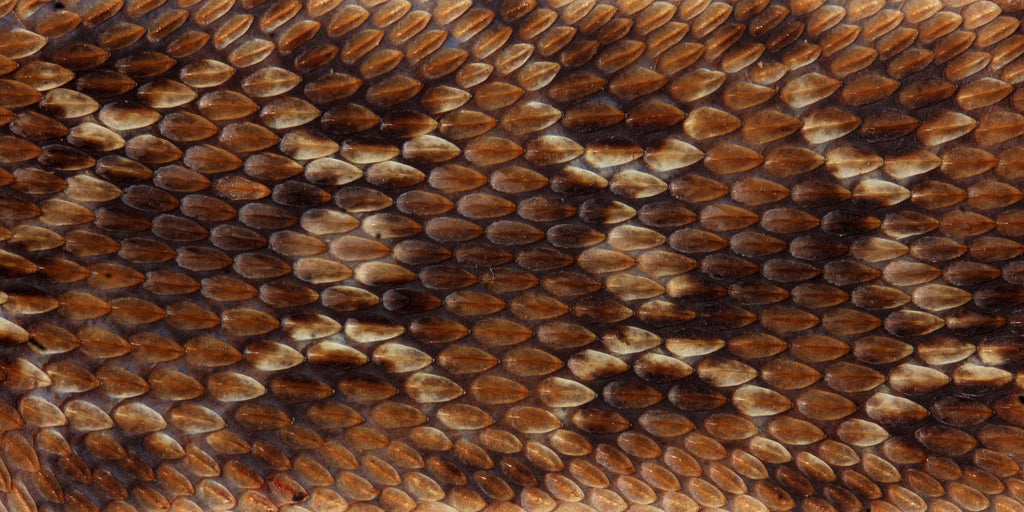What are "skin types"?

While “skin types” are largely a marketing term, understanding what the market is referring to certainly helps when identifying the right products for you. There are four types of skin: dry, normal, oily and combination. As you can see, “perfect” isn’t one of them. Your skin type is determined by genetics. So blame your parents for that pimple in your grad photo.
Skin Types Explained
Dry Skin
Skin that doesn’t produce enough oil. This does not have to do with hydration - water retention. That’s dehydrated skin. Dehydrated skin is not a skin type, it’s a condition. But, it’s that oil production that helps prevent water loss. So underproducing it leaves you more dehydrated. Tricky, but you’re smart enough to take your skin health seriously, so we’re confident you figured that out too.
So, we know that the oil helps your skin retain water. But how does it lose it? Sweat. Obviously. The active water loss from increased body temperature. Trans-Epidermal Water Loss (TEWL for the kewl kids). This is just the passive, natural way your body perspires. Think of it like evaporation.
What causes dry skin? A lack of Natural Moisturizing Factors. These are amino acids, derivatives of those amino acids, salts, sugars, lactic acid and urea - the end product of all broken down proteins. A lack of Epidermal Lipids. These are ceramides, cholesterol and fatty acids. All crucial to proper skin function.
Dry skin can feel tight, look brittle, and feel a little rough to touch. It lacks elasticity and is prone to cracking.
"Normal" Skin
Skin that produces a balanced amount of oil (sebum). It has fine pores, good circulation, a soft and smooth texture, virtually no blemishes and is not particularly prone to sensitivity. Normal skin is obviously the best case scenario, but the lucky winners aren’t out of the woods just yet. Normal skin tends to turn into dry skin as we age. All skin changes with time, with the weather, and with the environment. All skin requires keeping healthy.
Oily Skin
You guessed it, skin that overproduces oil. Imagine that. Oily skin has larger, more visible pores. Oily skin looks oily - it’s got a nice shine to it. Oily skin is generally thicker as well. Unfortunately, it’s more prone to oil related reactions - breakouts. Blackheads, whiteheads, all that fun stuff. We’ll get into those a bit more later. Remember, genetics. Not much you can do about it. Other causes? Stress, hormones, medications, skincare products. You know what doesn’t cause oily skin? Greasy foods. Old wives tale.
Now for a mind-blowing, universe altering tidbit of info: oily skin can be dry. Sorry, dehydrated. Yeah. You’ll recall that dry skin, the type, actually has nothing to do with hydration. It’s all about oil production - or a lack thereof - and the water loss associated with it. So, just as dry skin is dehydrated, so too can be oily skin. In fact, it often is. And that’s why your skin overcompensates for its lack of hydration by producing extra oil. It needs something to keep it elastic, stop it from losing even more water, and help maintain its function as a protective barrier. Oil to the rescue.
Combination Skin
You’re never going to believe this, but combination skin is skin that is both oily and dry. But not oily-dehydrated like the above scenario. Still with us? Great. This one has more to do with the different parts of your face. It’ll be oily in one place, and dry in the other. Simple. Usually, people with combination skin experience the oily part on their forehead and nose, while their cheeks are dry. We call that part the “T” zone. Mind. Blown.
A note on "sensitive" skin.
Sensitive skin is technically not a skin type. It’s simply an underlying condition related to one of the 4 types above. For example, if you have dry skin and use an especially drying cleanser - your skin will react poorly. Similarly, if you have oily skin and slather it with oil, the results won’t be good. Sensitive skin is more of a common issue across skin types rather than being a category in itself. And it’s by no means a medical diagnosis.
It’s just skin that is more prone to adverse reaction. Inflammation, redness, breakouts, rashes and the like are far more common for people with sensitive skin. These are usually caused by chemicals, fragrances, and dyes that the skin comes in contact with. Irritation can also be caused by clothing and friction.
How to determine your skin type.
The Full Day Test. One you’ll ace with ease. All you have to do is shower and wash your face in the morning, and look at it again at night. No further action required. Is it shiny? Oily skin for you. Is it tight? Flaky? Maybe even a bit itchy? Must be dry. Virtually no oil, no flakes, no tightness, no redness? Normal! Forehead and nose (T-Zone) shiny? Combination.
Sources
The No BS Guide To Discovering Your Skin Type. https://www.healthline.com/health/beauty-skin-care/skin-type-test
Skin Types. Overview and More. https://www.verywellhealth.com/skin-types-5088964
Guide To Different Skin Types And How To Determine Yours. https://thedermreview.com/guide-to-the-different-skin-types-and-how-to-determine-yours/
How To Care For Your Skin. https://www.healthline.com/health/beauty-skin-care/skin-types-care
